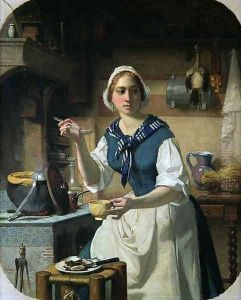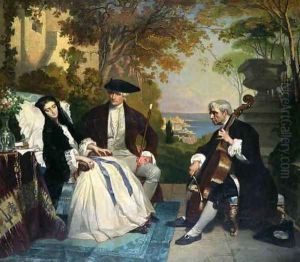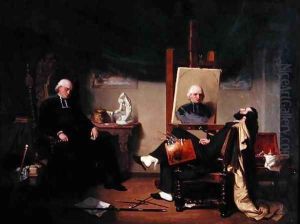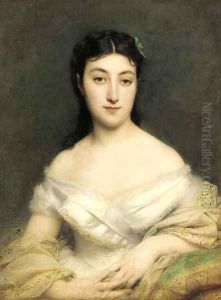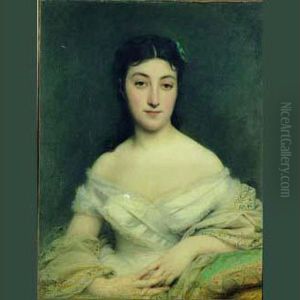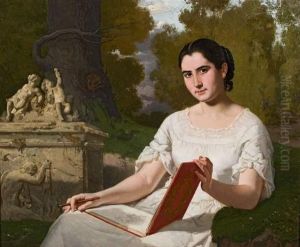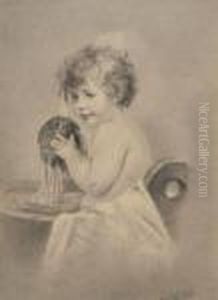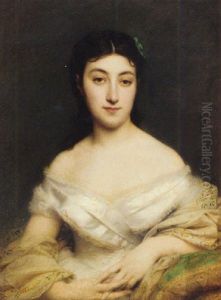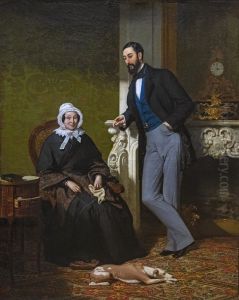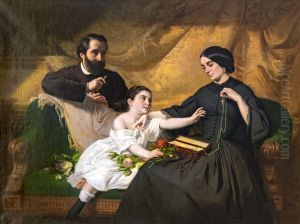Jean Jalabert Paintings
Jean Jalabert was a French painter born on February 8, 1815, in Nîmes, France. Not as widely recognized as some of his contemporaries, Jalabert is nonetheless remembered for his contribution to 19th-century French art, particularly within the academic painting tradition. He showed an interest in art from a young age and pursued his passion by studying at the École des Beaux-Arts in Paris.
Under the tutelage of prominent artists such as Paul Delaroche, Jalabert honed his skills in the neoclassical and romantic styles that were popular at the time. He became adept at historical and biblical subjects, which were very much en vogue in the mid-19th century. Jalabert's work is characterized by its fine detail, careful composition, and the use of light to create a dramatic effect.
Jalabert exhibited his work at the Paris Salon, the official art exhibition of the Académie des Beaux-Arts in Paris. His paintings received positive reviews and he garnered respect among his peers. Despite this, he did not achieve the same level of fame as some of his contemporaries. Much of his work was commissioned by religious institutions and private patrons, which may have contributed to his lesser-known status in the broader public sphere.
Throughout his life, Jean Jalabert remained committed to his art, though he never became a leading figure in the French art scene. He passed away on April 1, 1900, in Nîmes. Today, his works can be found in various museums and collections, where they are appreciated for their craftsmanship and adherence to the academic standards of his time.
